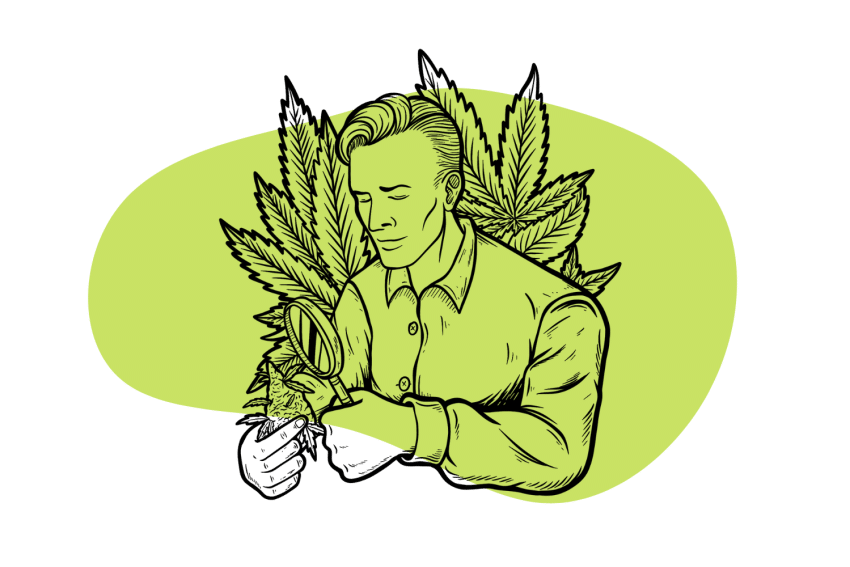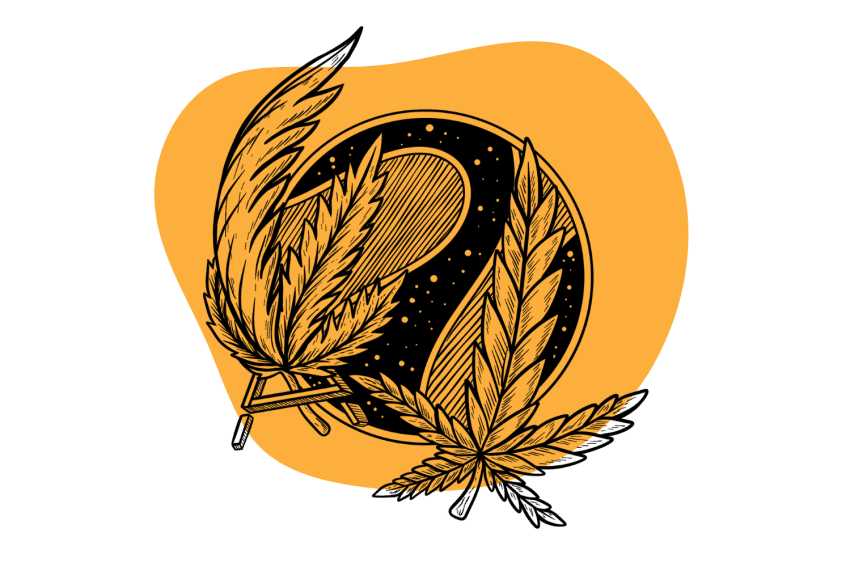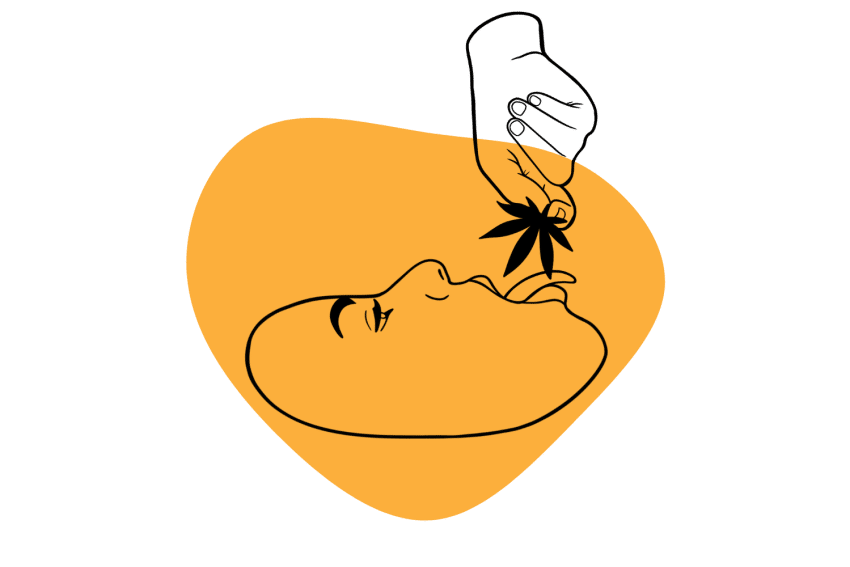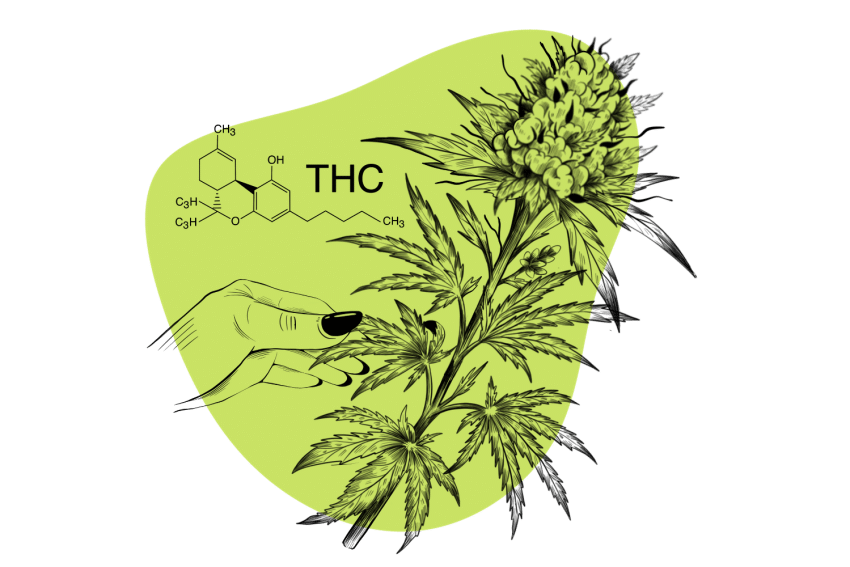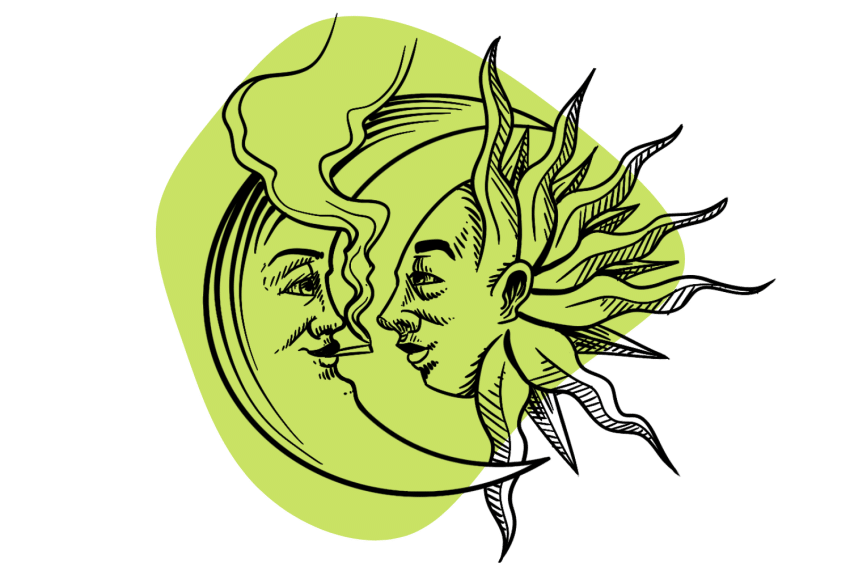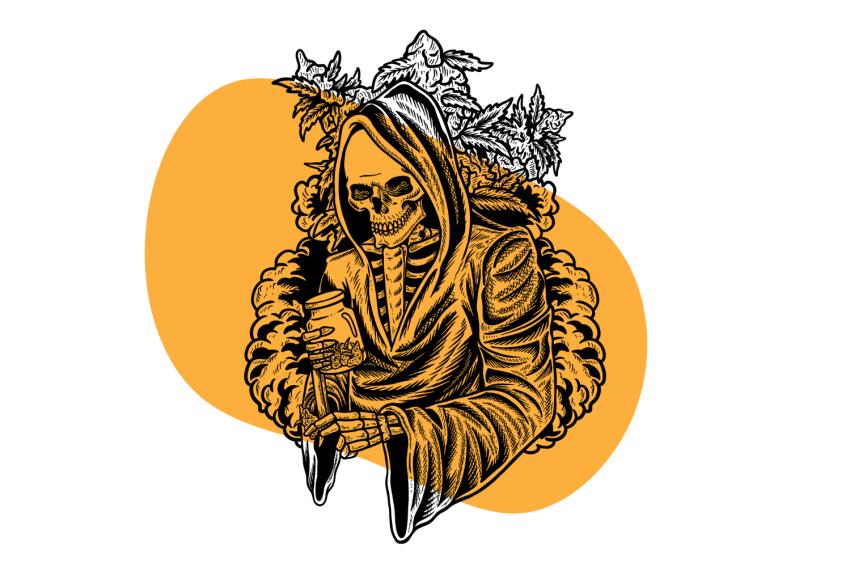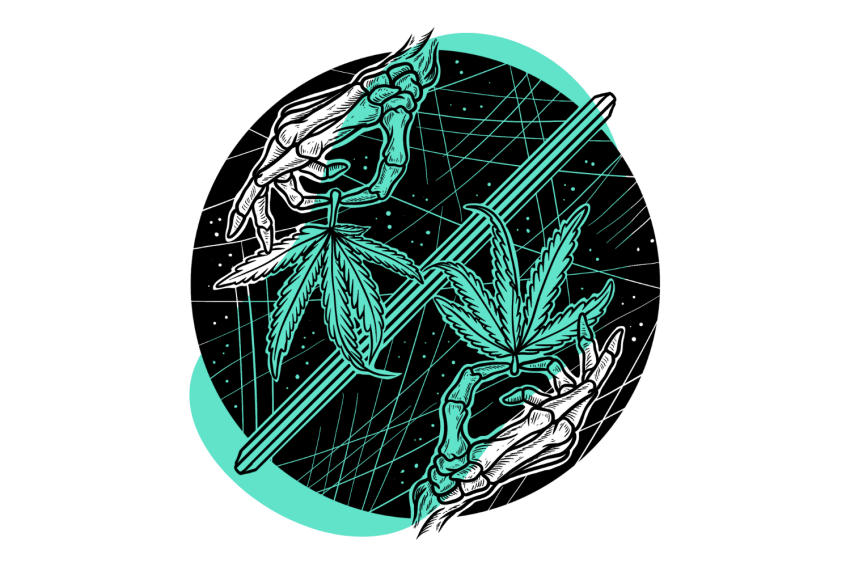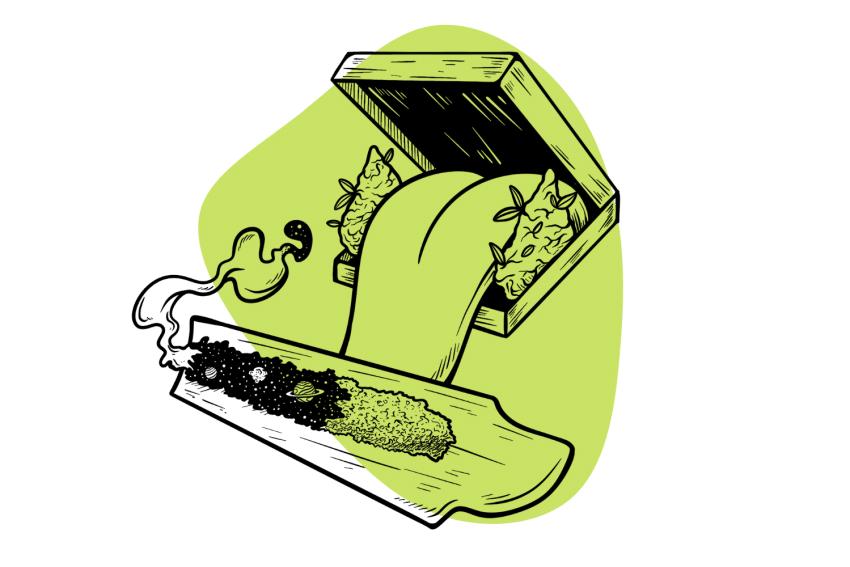Hemp vs. Marijuana In a Nutshell
All hemp and marijuana plants are cannabis, but not all cannabis plants are hemp and marijuana – like in the squares and rectangles analogy. Let’s clear up any confusion about their differences.
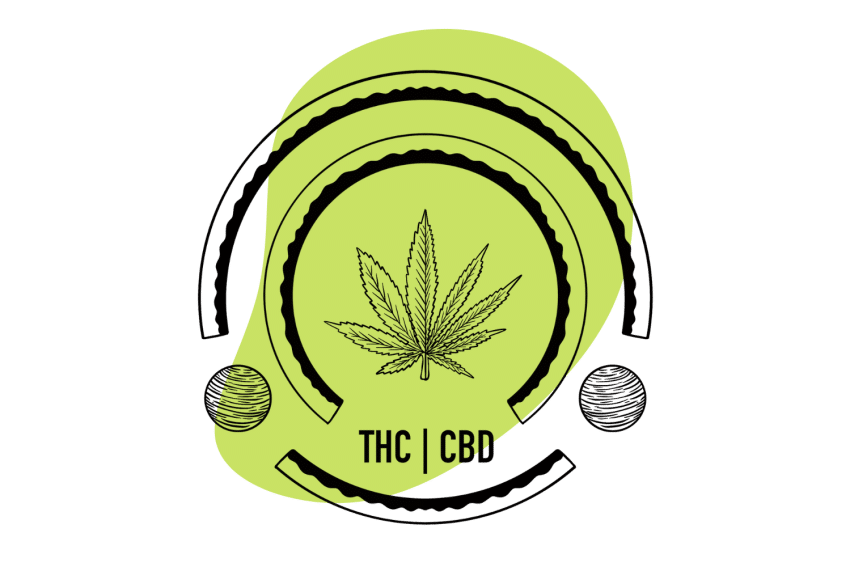
Trying to explain the difference between hemp and marijuana to a cannabis skeptic? You couldn’t find a better place.
This article covers the subject from the roots to the branches (no pun intended).
It’s easy to get confused, considering they both may look too similar for an amateur eye.
But even though they’re similar on the surface, they have different chemical profiles, uses, effects, and potential health benefits and are subject to different regulations.
Let’s go down the rabbit hole.
Cannabis vs. Hemp vs. Marijuana: Explaining the Difference
Cannabis is an umbrella term that covers plants from the Cannabecae family. From there, the family breaks down into the Cannabis sativa L. genus.
So all hemp and marijuana plants are cannabis, but not all cannabis plants are hemp and marijuana. Just like all squares are rectangles, but not all rectangles are squares.
Cannabis sativa L. has two varieties — Cannabis sativa var. sativa and Cannabis sativa var. indica.
What is Hemp?
Hemp is a subvariety of Cannabis sativa. It grows tall and sturdy stalks, thin leaves, and loose flowers — hence the name “industrial hemp.”
Hemp plants naturally have higher CBD levels and only a trace amount of THC. That’s why hemp is subject to different regulations than marijuana.
Historically, hemp – as the name suggests – has been used for industrial purposes thanks to its remarkably durable fiber, including the production of paper, ropes, clothes, construction materials, and (shortly before prohibition) cars and biofuel.
According to polymath Carl Sagan, hemp is one of the oldest — if not THE oldest — agricultural crops on earth.
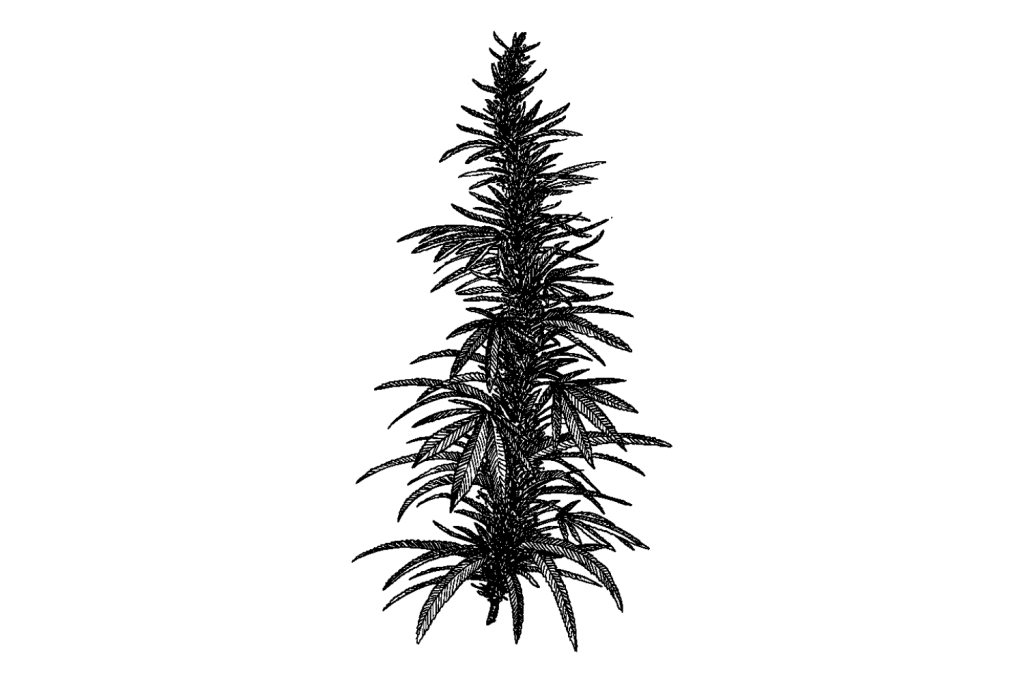
What is Marijuana?
Marijuana, earlier in history referred to as “indian hemp,” is basically every plant that contains more than 0.3% THC by dry weight.
This has nothing to do with the plant’s botanical characteristics — but rather with the legal nomenclature that separates marijuana from hemp.
The main difference between hemp and marijuana is the said THC content. Unlike hemp, marijuana boasts high levels of THC, and usually no more than 3% CBD, unless it comes from selective breeding.
Marijuana can be both Cannabis sativa and Cannabis indica, while hemp is only sativa.
Sativa strains are native to tropical regions. Indica, on the other hand, naturally grows on the Asian continent and is said to have originated from Afghanistan and Pakistan, namely in the Hindu Kush mountains.
Marijuana’s legal status is far more confusing than that of hemp – but we’ll get to that later in the article.
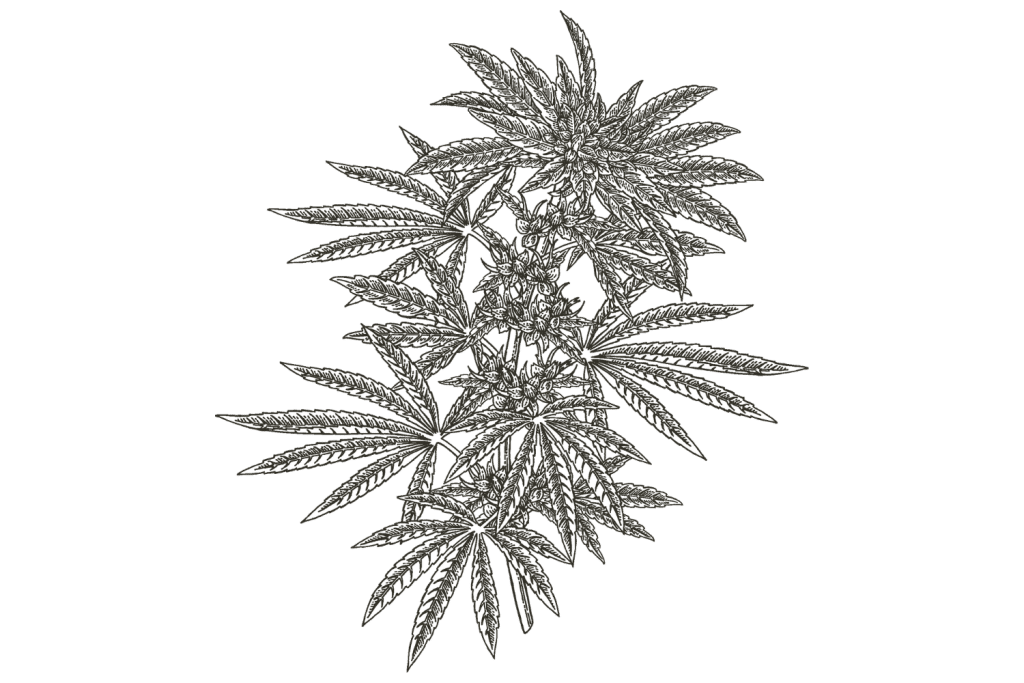
Hemp vs. Marijuana: What’s the Difference?
Now that we’ve passed through the historical and linguistic context, let’s explore the physical traits of hemp and marijuana to map out the main differences.
We’ll cover the following:
- Appearance
- THC: CBD ratios
- Terpene content
- Effects
- Uses
- Legal status
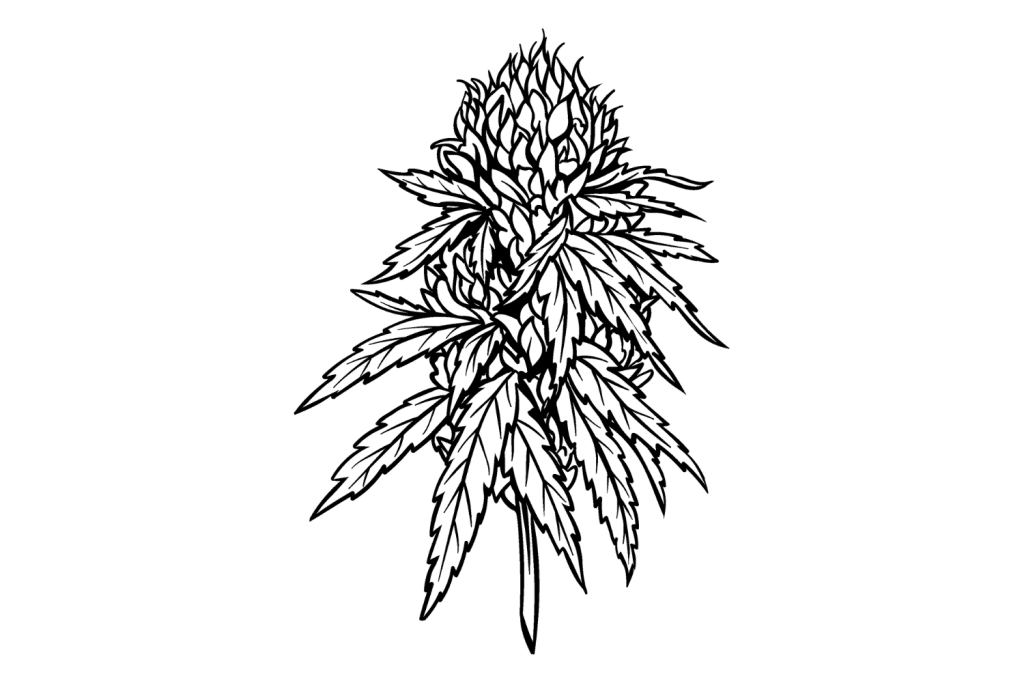
Appearance
All you need to do is take a quick look at both plants, and you’ll notice they’re not as similar as they pretend to be.
Hemp can grow up to 16 feet and have exceptionally sturdy stalks. They can be grown close to each other without worrying about ruining the crops.
The hemp leaves are quite thin, and most flowers appear on top of the plant — so it looks more like a cane.
Marijuana grows up to 5 feet tall and — depending on the strain (sativa vs. indica) — resembles a tree or bush.
Its leaves are broad, and the flowers are covered by a noticeable layer of resin, indicative of high cannabinoid and terpene content.
Speaking of which…
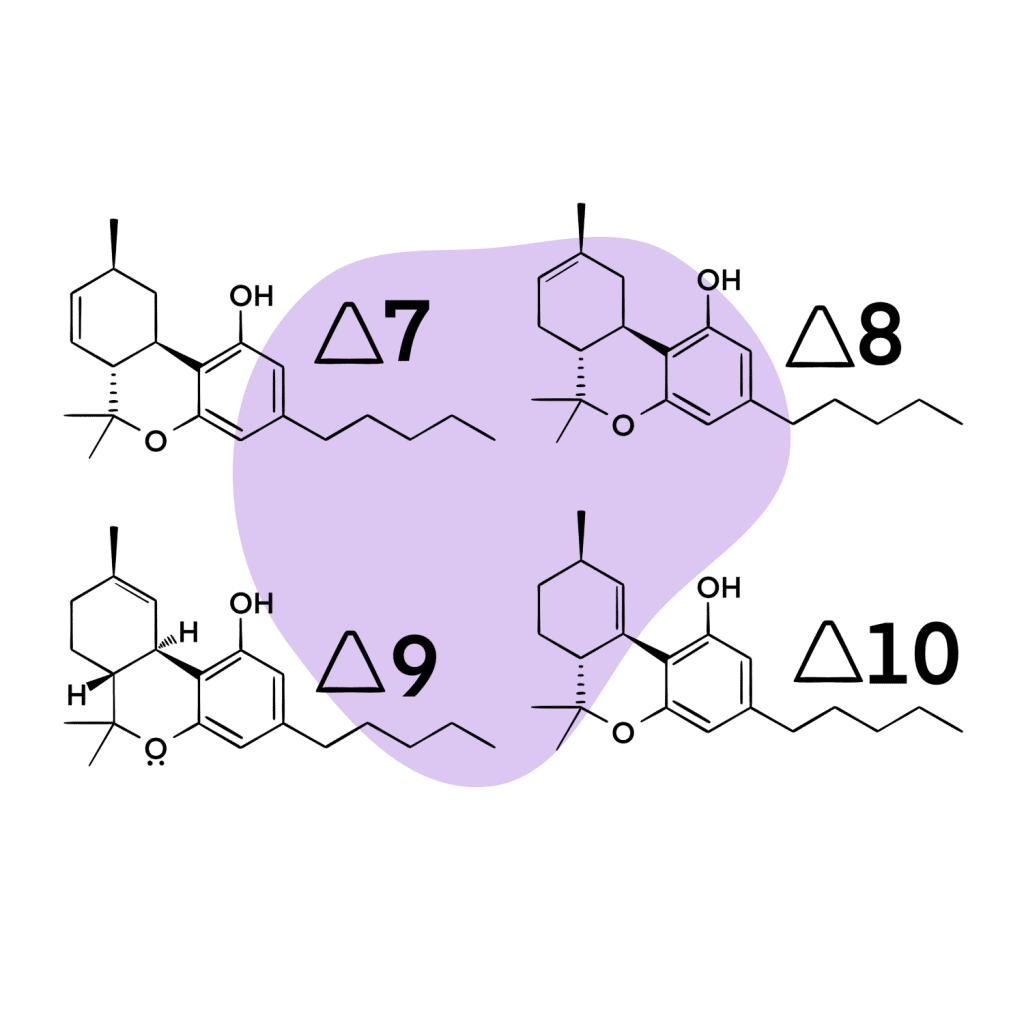
THC:CBD Ratios
Hemp plants contain no more than 0.3% THC by dry weight. They come with more CBD.
By definition, marijuana contains between 1% and 30% THC and usually around 1-3% CBD. High-CBD marijuana strains also exist1/’, but they come from selective breeding.
More THC means more resin production, and more resin production equals… more terpenes!
Terpenes
Terpenes are the aromatic molecules that also drive the effects of weed in a specific direction.
THC and CBD are marijuana’s engine — but terpenes navigate the road.
A higher terpene content indicates greater therapeutic potential and more diverse and complex aroma profiles.
Hemp isn’t as resinous as marijuana, so its aromas are rather flat and monotonous, resembling a blend of freshly cut grass, hops, and earth.
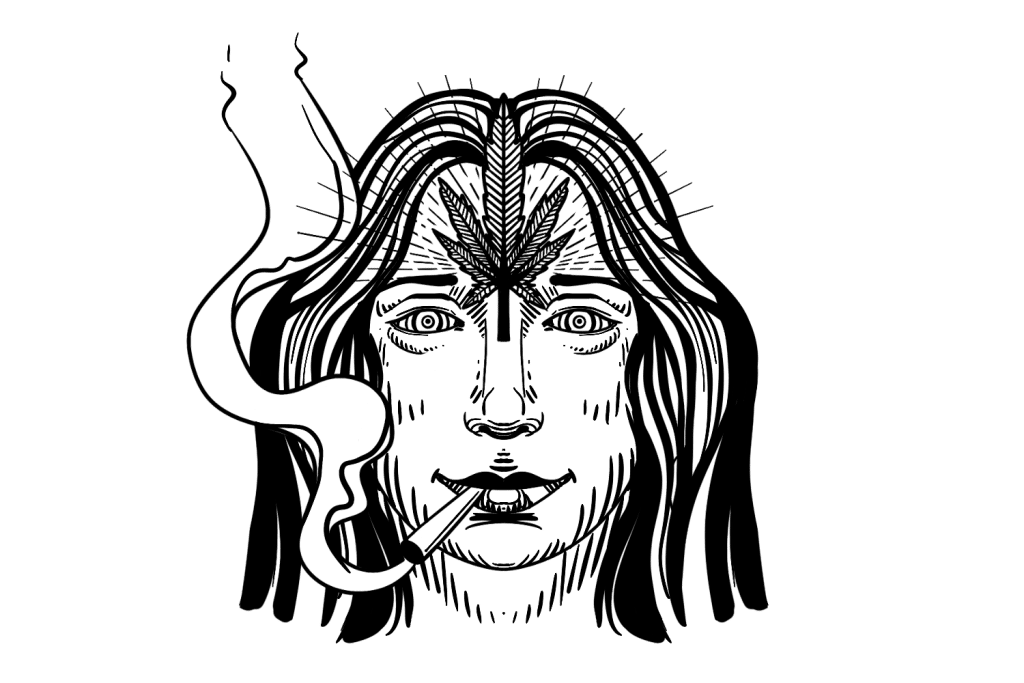
Effects
Both affect the endocannabinoid system, but since hemp contains only a trace amount of THC, smoking or vaping its flowers won’t get you high.
You may feel calm, elevated, more focused, and balanced — but you won’t feel the signature marijuana buzz.
With marijuana, it’s a different story. Once THC enters your bloodstream, it binds to CB1 receptors in the brain, altering your state of consciousness [1].
Weed makes you euphoric, hungry, and more reactive to the environment, and – depending on the strain – it can make you motivated or glued to the couch.
In higher doses, marijuana reveals its biphasic nature, inducing feelings of anxiety and paranoia in sensitive users [2].
CBD doesn’t directly stimulate any cannabinoid receptors in the brain. It’s the modulator of the endocannabinoid system — and doesn’t get you high [3].
Instead, CBD signals the endocannabinoid system to produce more anandamide, one of the two major endocannabinoids, and inhibits the FAAH enzyme that breaks it down — resulting in more anandamide in your bloodstream [4].
When you take CBD, it reduces anxiety, stress, and pain [5]. It may also help you fall asleep faster and regulate the REM sleep stage [6].
Not to mention that CBD is a potent antioxidant and neuroprotectant — preventing excessive aging of the brain and offsetting neurodegenerative diseases [7].
While THC acts more like a football lineman, CBD is more like Bob the Builder.

Health Benefits
The benefits of marijuana and hemp overlap in many aspects.
People use CBD to combat:
- Anxiety [8]
- Autoimmune diseases [9]
- Cancer [10]
- Depression [11]
- Inflammation [12]
- Nervousness [13]
- Neurodegeneration [14]
- Seizures [15]
- Side effects of Autism [16]
THC, on the other hand, can reduce:
- ADHD [17]
- Autoimmune disorders [18]
- Cancer [19]
- Depression [20]
- Inflammation [21]
- Insomnia [22]
- Muscle spasticity [23]
- Neurodegeneration [24]
- Pain [25]
- PTSD [26]
THC and CBD work in tandem to create a unique synergy known as the entourage effect. Together, cannabinoids and terpenes produce stronger therapeutic effects than each of them in isolation [27].
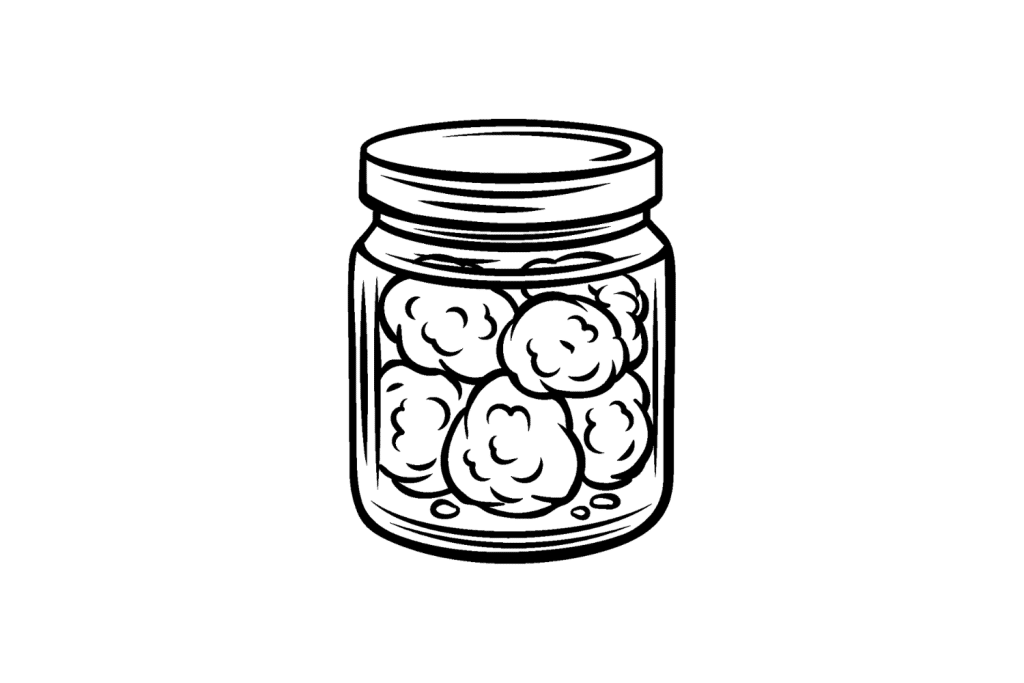
Uses
Hemp is more versatile than marijuana. You can use all parts of the plant to make the following:
- Industrial materials: paper, clothes, construction materials, plastic, biofuel
- Consumables: hemp oil, hemp flour, seeds, tea
- Supplements: CBD oil, gummies, topicals, flower, vape carts
- Topicals: CBD creams, balms, hydrolats, masks, body balms, ointments, lotions
Marijuana has a narrower scope. Most of the time, you use flowers to either smoke or vaporize them – or process them into edibles, tinctures, vape extracts, and topical products.
You can take some marijuana leaves and juice them or brew weed tea.
Seeds are mostly picked by growers and breeders because they don’t have the nutritional value of hemp seeds, which would make them more appealing to the food industry.
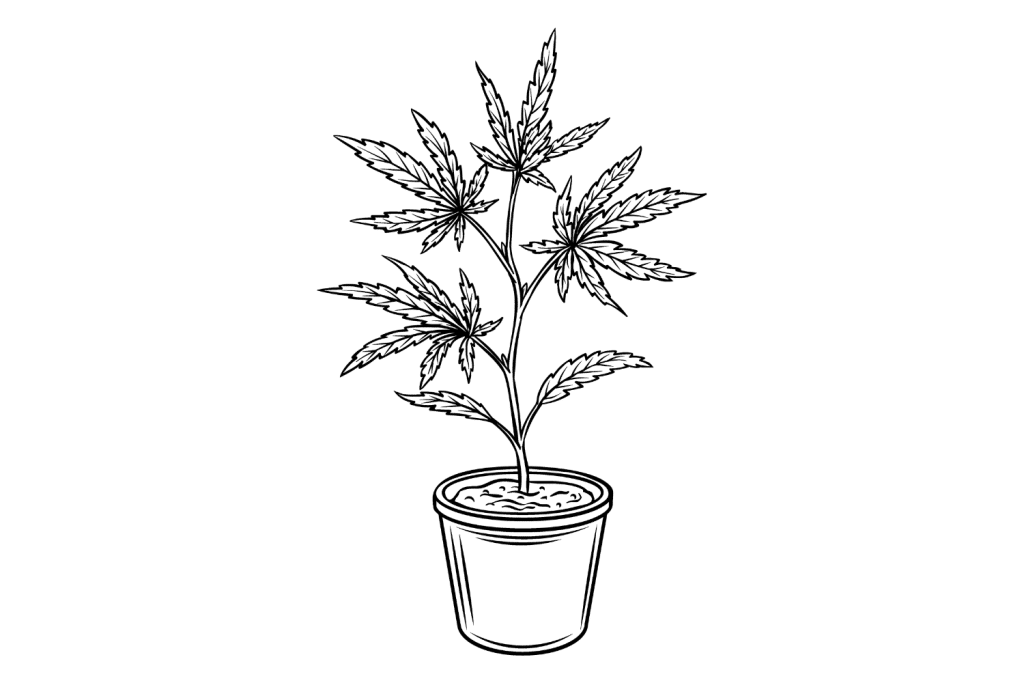
Cultivation
When it comes to growing hemp vs. marijuana, there are two key differences:
- Hemp farmers grow male plants together with female ones to produce seeds and either plant future crops or use them for food. Marijuana plantations aim at eliminating the males to maximize the harvest of female flowers.
- Most marijuana plants are grown within a 4 square feet distance. That’s because marijuana is more prone to develop mold when the plants are too close to each other. Hemp, on the other hand, can be planted at around 40 plants per 4 square feet when it’s grown for oil. Fiber-dedicated plants can be planted as densely as about 120 plants per the same volume.
Hemp is usually grown outdoors. Marijuana can grow this way too, but the majority of growers put their plants in indoor grow kits or greenhouses to gain better control of the environment and squeeze the most out of the plant’s resin production.
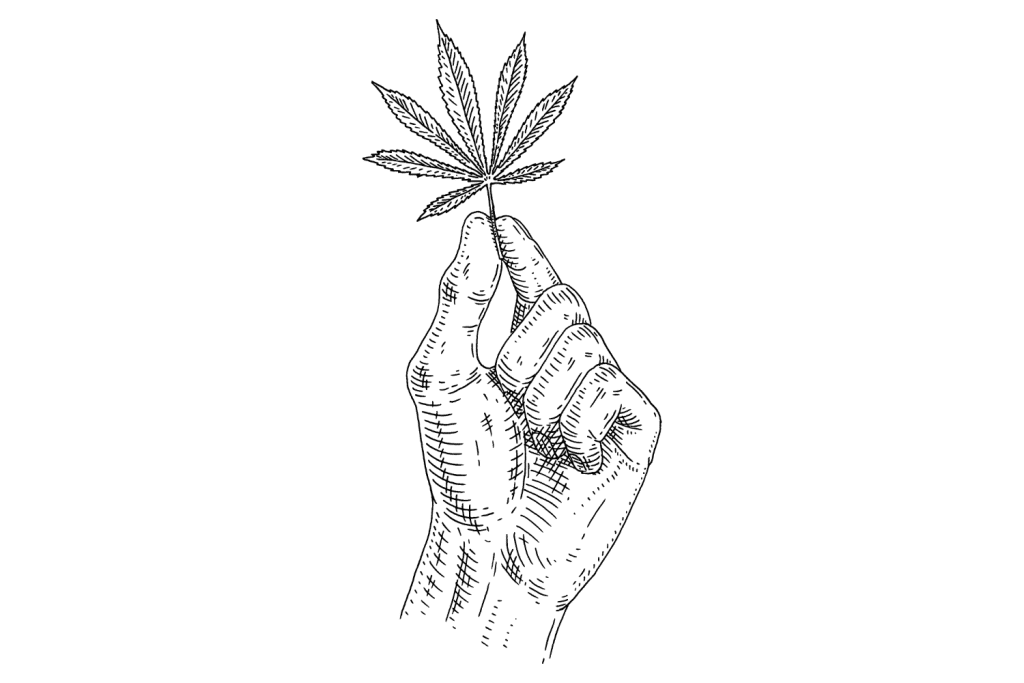
Legal Status
Hemp is legal in most places in the world as long as it contains no more than 0.3% THC by dry weight.
Marijuana remains illegal except for some countries, such as Canada, Uruguay, Mexico, Malta, Thailand, and 23 states in the U.S.
Many countries have already decriminalized weed or implemented medical marijuana programs for patients.
With Germany, Czechia, and Switzerland planning to legalize in 2023, the global legalization movement may soon enter the snowball phase — and turn into an avalanche.
Final Thoughts: Hemp or Marijuana?
Hemp and marijuana are two different species of the Cannabis sativa L. genus.
Their physical traits and phytochemical content make each plant better for different purposes.
If you want to source fiber for industrial use or harvest CBD flowers for supplements — hemp will be your best bet.
But if you’re planning to use cannabis recreationally, spiritually, or medicinally — then marijuana has the upper hand in this clash.
Ultimately, it all boils down to your needs, but there’s a place for both plants in your life. Hemp can help us save the environment, and marijuana, when used responsibly, is a versatile tool to upgrade your physical and mental health.
References
- Mackie K. (2006). Cannabinoid receptors as therapeutic targets. Annual review of pharmacology and toxicology, 46, 101–122.
- Rey, A. A., Purrio, M., Viveros, M. P., & Lutz, B. (2012). Biphasic effects of cannabinoids in anxiety responses: CB1 and GABA(B) receptors in the balance of GABAergic and glutamatergic neurotransmission. Neuropsychopharmacology : official publication of the American College of Neuropsychopharmacology, 37(12), 2624–2634.
- Chye, Y., Christensen, E., Solowij, N., & Yücel, M. (2019). The Endocannabinoid System and Cannabidiol’s Promise for the Treatment of Substance Use Disorder. Frontiers in psychiatry, 10, 63.
- Deutsch D. G. (2016). A Personal Retrospective: Elevating Anandamide (AEA) by Targeting Fatty Acid Amide Hydrolase (FAAH) and the Fatty Acid Binding Proteins (FABPs). Frontiers in pharmacology, 7, 370.
- Blessing, E. M., Steenkamp, M. M., Manzanares, J., & Marmar, C. R. (2015). Cannabidiol as a Potential Treatment for Anxiety Disorders. Neurotherapeutics : the journal of the American Society for Experimental NeuroTherapeutics, 12(4), 825–836.
- Shannon, S., Lewis, N., Lee, H., & Hughes, S. (2019). Cannabidiol in Anxiety and Sleep: A Large Case Series. The Permanente journal, 23, 18–041.
- Bhunia, S., Kolishetti, N., Arias, A. Y., Vashist, A., & Nair, M. (2022). Cannabidiol for neurodegenerative disorders: A comprehensive review. Frontiers in pharmacology, 13, 989717.
- Dahlgren, M.K., Lambros, A.M., Smith, R.T. et al. Clinical and cognitive improvement following full-spectrum, high-cannabidiol treatment for anxiety: open-label data from a two-stage, phase 2 clinical trial. Commun Med 2, 139 (2022).
- Rodríguez Mesa, X. M., Moreno Vergara, A. F., Contreras Bolaños, L. A., Guevara Moriones, N., Mejía Piñeros, A. L., & Santander González, S. P. (2021). Therapeutic Prospects of Cannabinoids in the Immunomodulation of Prevalent Autoimmune Diseases. Cannabis and cannabinoid research, 6(3), 196–210.
- Heider, C. G., Itenberg, S. A., Rao, J., Ma, H., & Wu, X. (2022). Mechanisms of Cannabidiol (CBD) in Cancer Treatment: A Review. Biology, 11(6), 817.
- Silote, G. P., Sartim, A., Sales, A., Eskelund, A., Guimarães, F. S., Wegener, G., & Joca, S. (2019). Emerging evidence for the antidepressant effect of cannabidiol and the underlying molecular mechanisms. Journal of chemical neuroanatomy, 98, 104–116.
- Henshaw, F. R., Dewsbury, L. S., Lim, C. K., & Steiner, G. Z. (2021). The Effects of Cannabinoids on Pro- and Anti-Inflammatory Cytokines: A Systematic Review of In VivoStudies. Cannabis and cannabinoid research, 6(3), 177–195.
- Masataka N. (2019). Anxiolytic Effects of Repeated Cannabidiol Treatment in Teenagers With Social Anxiety Disorders. Frontiers in psychology, 10, 2466.
- Fernández-Ruiz, J., Sagredo, O., Pazos, M. R., García, C., Pertwee, R., Mechoulam, R., & Martínez-Orgado, J. (2013). Cannabidiol for neurodegenerative disorders: important new clinical applications for this phytocannabinoid?. British journal of clinical pharmacology, 75(2), 323–333.
- Lattanzi, S., Brigo, F., Trinka, E., Zaccara, G., Cagnetti, C., Del Giovane, C., & Silvestrini, M. (2018). Efficacy and Safety of Cannabidiol in Epilepsy: A Systematic Review and Meta-Analysis. Drugs, 78(17), 1791–1804.
- Ma, L., Platnick, S., & Platnick, H. (2022). Cannabidiol in Treatment of Autism Spectrum Disorder: A Case Study. Cureus, 14(8), e28442.
- Mansell, H., Quinn, D., Kelly, L. E., & Alcorn, J. (2022). Cannabis for the Treatment of Attention Deficit Hyperactivity Disorder: A Report of 3 Cases. Medical cannabis and cannabinoids, 5(1), 1–6.
- Giorgi, V., Marotto, D., Batticciotto, A., Atzeni, F., Bongiovanni, S., & Sarzi-Puttini, P. (2021). Cannabis and Autoimmunity: Possible Mechanisms of Action. ImmunoTargets and therapy, 10, 261–271.
- Hanganu, B., Lazar, D. E., Manoilescu, I. S., Mocanu, V., Butcovan, D., Buhas, C. L., Szalontay, A. S., & Ioan, B. G. (2022). Controversial Link between Cannabis and Anticancer Treatments-Where Are We and Where Are We Going? A Systematic Review of the Literature. Cancers, 14(16), 4057.
- Martin, E. L., Strickland, J. C., Schlienz, N. J., Munson, J., Jackson, H., Bonn-Miller, M. O., & Vandrey, R. (2021). Antidepressant and Anxiolytic Effects of Medicinal Cannabis Use in an Observational Trial. Frontiers in psychiatry, 12, 729800.
- Anil, S. M., Peeri, H., & Koltai, H. (2022). Medical Cannabis Activity Against Inflammation: Active Compounds and Modes of Action. Frontiers in pharmacology, 13, 908198.
- Walsh, J. H., Maddison, K. J., Rankin, T., Murray, K., McArdle, N., Ree, M. J., Hillman, D. R., & Eastwood, P. R. (2021). Treating insomnia symptoms with medicinal cannabis: a randomized, crossover trial of the efficacy of a cannabinoid medicine compared with placebo. Sleep, 44(11), zsab149.
- Ungerleider, J. T., Andyrsiak, T., Fairbanks, L., Ellison, G. W., & Myers, L. W. (1987). Delta-9-THC in the treatment of spasticity associated with multiple sclerosis. Advances in alcohol & substance abuse, 7(1), 39–50.
- Paes-Colli, Y., Aguiar, A. F. L., Isaac, A. R., Ferreira, B. K., Campos, R. M. P., Trindade, P. M. P., de Melo Reis, R. A., & Sampaio, L. S. (2022). Phytocannabinoids and Cannabis-Based Products as Alternative Pharmacotherapy in Neurodegenerative Diseases: From Hypothesis to Clinical Practice. Frontiers in cellular neuroscience, 16, 917164.
- Busse, J. W., Vankrunkelsven, P., Zeng, L., Heen, A. F., Merglen, A., Campbell, F., Granan, L. P., Aertgeerts, B., Buchbinder, R., Coen, M., Juurlink, D., Samer, C., Siemieniuk, R. A. C., Kumar, N., Cooper, L., Brown, J., Lytvyn, L., Zeraatkar, D., Wang, L., Guyatt, G. H., … Agoritsas, T. (2021). Medical cannabis or cannabinoids for chronic pain: a clinical practice guideline. BMJ (Clinical research ed.), 374, n2040.
- Abizaid, A., Merali, Z., & Anisman, H. (2019). Cannabis: A potential efficacious intervention for PTSD or simply snake oil?. Journal of psychiatry & neuroscience : JPN, 44(2), 75–78.
- Russo, E. B. (2011). Taming THC: potential cannabis synergy and phytocannabinoid‐terpenoid entourage effects. British journal of pharmacology, 163(7), 1344-1364.

